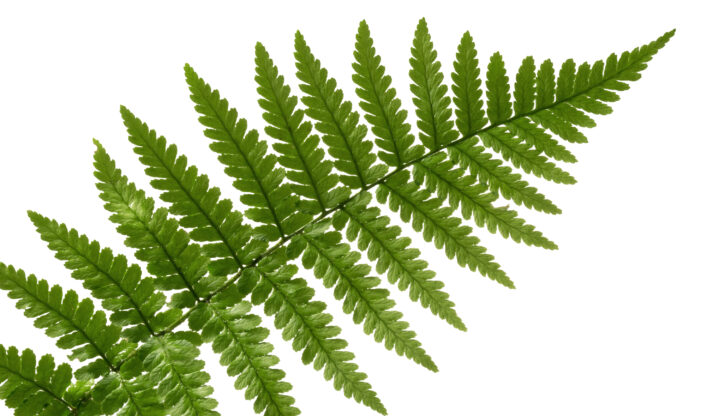Ferns, flowerless plants that have feathery or leafy fronds, have changed little since their prehistoric days. With fossil records dating back to the Devonian era 380 million years ago, ferns as a plant group predate seeds, grasses, flowers, and modern trees. While today’s image of ferns first appeared during the Cretaceous era 70 million years ago, ancient extinct fern species resembled giant trees and bushes. Once a main source of food for dinosaurs, they were among the dominant plant life forms on earth in those early days of terrestrial living.
Where Ferns are Found
Ferns are typically found in moist, shady environments that protect the leaves from drying out. In Wisconsin, they are common in shaded forest swamps, moist riparian zones near water, and even growing in rock crevices such as those along the Niagara escarpment or limestone bluffs of the Driftless region. Wisconsin is home to over 60 species of ferns, a tribute to the plant’s incredible diversity. An estimated 10,500 extant species of ferns exist worldwide, classified into 40 families. They are most abundant in tropical areas but can even be found atop mountains and in deserts and arctic habitats.
Fern Reproduction
Because they evolved before seeds and flowering plants, ferns use a unique form of reproduction. Small orange or brown structures called sporangia can be found on specialized leaves, known as fertile fronds. These sporangia are filled with spores. When mature, the fern releases these spores into the air, like a fungus. These spores land and develop into a small heart-shaped plantlet called a gametophyte. If water is present, this tiny intermediate generation can become fertilized and develop into a mature fern. Alternatively, many fern species can also spread via rhizomes underground, creating a close colony of many plants.
Identifying Ferns
A clear identifying marker of some fern species is their fertile fronds. These typically develop and mature during the early summer months in Wisconsin and can sometimes look different from the sterile fronds. Some of the most common and conspicuous ferns found in shaded wet areas are ostrich ferns, aptly named for their large size with leaves towering up to six feet tall. But the fertile fronds are conspicuously smaller and dry to a dark brown when mature. The interrupted fern has similar looking sterile fronds to the ostrich fern but features a unique fertile frond. The small dark brown sporangia are located in the middle section of the frond, and “interrupt” the leaflet pattern, looking as if part of the leaf has withered away. Another common species, the goldie’s fern, develops sporangia on the underside of the fertile frond leaflets in organized rows. All three of these species can be found near our Pavilion at Schlitz Audubon.
In spring, watch for the new curled fronds sprouting from these perennial plants, which are known as “fiddleheads.” Summer is the time to search for the fertile fronds and developing sporangia. Wisconsin is even home to some evergreen species of ferns, like the wood fern along our Lake Michigan trail, which stands out with green fronds in the dead of winter. Take time to explore our forests and bluffs to find these fascinating ancient plants that have survived and thrived, virtually unchanged, for millions of years.


